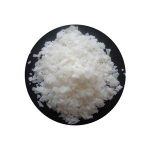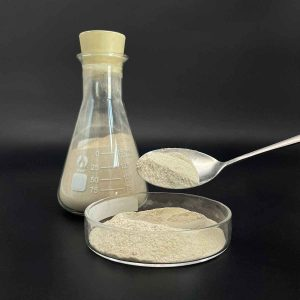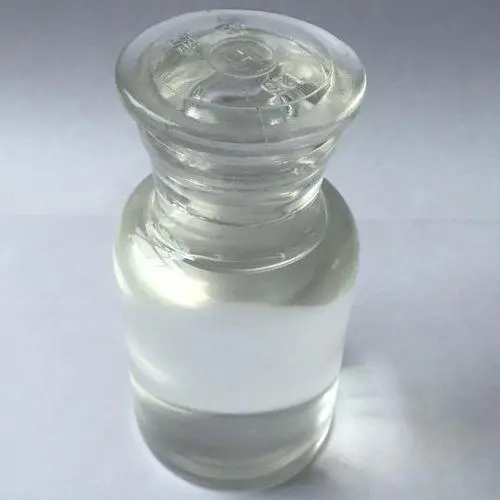1. Introduction
In the past 48 hours, the European Commission’s Scientific Committee on Consumer Safety (SCCS) released a preliminary opinion reaffirming concerns about high-concentration sodium lauryl sulfate (SLS) in leave-on cosmetic products, citing potential skin irritation and barrier disruption. This update has reignited global discussions among cosmetic chemists and regulatory bodies about surfactant selection in consumer goods. Against this backdrop, understanding the nuanced differences between SLS and its alternatives is more critical than ever.

Sodium lauryl sulfate—also known as sodium dodecyl sulfate (SDS)—is one of the most widely used anionic surfactants due to its excellent foaming, cleansing, and emulsifying properties. However, its reputation for causing irritation has spurred the development and adoption of milder substitutes. This article offers a deep dive into SLS and compares it with key alternatives across chemical classification, performance, and application suitability.
2. Chemical Identity and Classification of Sodium Lauryl Sulfate
Sodium lauryl sulfate (C12H25SO4Na), often labeled as sls sodium lauryl sulfate or na lauryl sulfate, is an anionic surfactant derived from lauryl alcohol (dodecyl alcohol). Its structure features a hydrophobic 12-carbon tail and a hydrophilic sulfate head, enabling it to reduce surface tension effectively—a core function of any surfactant. The meaning of surfactant lies in this dual affinity: ‘surface-active agent’ that interfaces between water and oil.
Despite common confusion, sodium lauryl sulfate is distinct from sodium laureth sulfate (SLES), also called sodium lauryl ether sulfate or sodium lauryl ether sulphate. SLES is ethoxylated, meaning it contains ethylene oxide units (laureth), which render it less irritating than SLS. Labels may ambiguously list ‘sls sodium laureth sulfate,’ but these are chemically different compounds.
3. Comparison with Alternative Surfactant Classes
3.1 Anionic Alternatives
Beyond SLS, other anionic surfactants include sodium dodecylbenzene sulfonate (used in detergents), sodium lauroyl sarcosinate (a milder foaming agent in toothpaste), and sodium coco sulfate (derived from coconut oil). Sodium cocoyl isethionate and sodium lauroyl methyl isethionate offer even gentler cleansing, commonly found in syndet bars. These alternatives maintain efficacy while reducing irritation potential compared to traditional SLS.

3.2 Amphoteric and Non-Ionic Options
Amphoteric surfactants like cocamidopropyl betaine (also termed coco betaine, amidopropyl betaine, or coco amido propyl betaine) function as both anionic and cationic depending on pH. They are frequently paired with SLS to mitigate its harshness. Non-ionic surfactants—including alkyl polyglucoside, decyl glucoside, coco glucoside, polysorbate 80 (Span80), and ethoxylated alcohols—lack charged groups, making them exceptionally mild and compatible with sensitive skin formulations.
Bio surfactants such as sodium cocoyl glutamate represent a growing category derived from renewable feedstocks. Unlike fluoro surfactants or synthetic cationic types like cetyl trimethyl ammonium bromide (CTAB), bio-based options are biodegradable and eco-friendly.
3.3 Cationic and Specialty Surfactants
Cationic surfactants, including cetyltrimethylammonium bromide and ammonium lauryl sulfate (or ammonium dodecyl sulfate), are primarily used for antimicrobial or conditioning effects rather than cleansing. They are rarely combined with anionic surfactants like SLS due to charge incompatibility, which can cause precipitation.
In agricultural contexts, surfactants for herbicides or weed killers often include methylated seed oil, lignin sulfonate, or nonionic surfactant blends acting as lawn wetting agents or wetting agents for grass to enhance foliar absorption.

4. Performance, Safety, and Market Trends
SLS remains popular due to its low cost, strong detergency, and high foam volume. However, its aggressive nature can strip natural oils, leading to dryness or irritation—especially in leave-on products. In contrast, sodium laureth sulfate (laureth sulphate) and amphoteric co-surfactants like cocamidopropyl provide rich lather with reduced irritation.
Recent consumer demand for ‘sulfate-free’ products has driven brands to replace SLS with alternatives like sodium coco sulfate or alkyl polyglucosides. Companies such as Rohit Surfactants Private Limited now offer tailored blends meeting these clean-label expectations without sacrificing performance.
For industrial buyers searching ‘sodium lauryl sulfate for sale,’ purity grades and compliance with regional regulations (e.g., REACH, FDA) are key considerations. Meanwhile, laboratory-grade SDS (natrium lauryl sulfate) is essential in electrophoresis and protein denaturation protocols.
5. Conclusion
While sodium lauryl sulfate remains a benchmark anionic surfactant for its effectiveness and economy, evolving safety standards and consumer preferences are accelerating the shift toward milder, sustainable alternatives. Formulators must weigh factors like irritation potential, biodegradability, and compatibility when selecting between SLS, sodium laureth sulfate, amphoteric betaines, or bio-based non-ionic surfactants. Understanding these distinctions ensures optimal product performance across cosmetics, pharmaceuticals, and agrochemical applications.
Our Website founded on October 17, 2012, is a high-tech enterprise committed to the research and development, production, processing, sales and technical services of ceramic relative materials such as Sodium. Our products includes but not limited to Boron Carbide Ceramic Products, Boron Nitride Ceramic Products, Silicon Carbide Ceramic Products, Silicon Nitride Ceramic Products, Zirconium Dioxide Ceramic Products, etc. If you are interested, please feel free to contact us.


